BLACK SOCIAL HISTORY SOUTH ASIA’S AFRICANS: A FORGOTTEN PEOPLE
Across South Asia, there are isolated communities of African origin – often disadvantaged and with only tenuous links to the continent of their forbears. Dr Shihan de Silva Jayasuriya, a London-based researcher, explains how her interest in these communities was first aroused, and how diverse patterns of migration still shape the situation of people widely known today as ‘Sidis’:
My interest in South Asian communities with African ancestry began when I encountered the Afro-Sri Lankan community in Sirambiyadiya, a small village, few miles inland from Puttalama on the northwestern coast. At the time, I was researching the current status of Indo-Portuguese, a creole language.
Indo-Portuguese is a language which should have died out with the end of Portuguese rule in 1658. Yet here in this small African community it still survives albeit spoken largely by the elderly. How had it survived among people with African ancestry? And what were the mechanisms which ensured that survival?
Most Sri Lankans are not aware of this small African community, though its grand-matriach, Ana Miselyia, and others were portrayed on Sri Lankan television in a documentary in the 1970s.
I learnt about their past, from their own accounts of their history. They told me that their ancestors were slaves and soldiers who were brought from Mozambique, Madagascar, Goa and Portugal by the Europeans who dominated the Island for almost half a millenium. But there are more subtle and far-reaching reasons which have a bearing on their current position. To understand this we have to move beyond the shores of Sri Lanka.
Afro-Asian communities are the result of a continuous centuries-old phenomenon but why are they not widely known? The obvious reason for this is their hidden presence as forest-dwellers, villagers and people on the margins. Those who live in urban areas are not easily identifiable either and are lost in the diversity of South Asia’s cosmopolitan cities. Afro-Asians are taken for African tourists until they begin to speak in the local Asian language!
Movement of Africans to South Asia was fuelled by the slave trade. An estimated 12.5 million Africans were moved across the Sahara, Red Sea and the Indian Ocean to unfamiliar lands where they were re-rooted. But this movement was over a millennium, from 900 AD to 1900 AD. The Indian Ocean slave trade was lubricated by socio-religious factors. Benefits from concubines, eunuchs, soldiers and servants were not entirely economic.
European commercial expansion into Asian markets added another dimension to this trade in humans which moved millions of Africans overland and across the world’s giant waterways. But we must not forget that free movement of African seafarers, sailors and merchants in the Indian Ocean World did not stop whilst the slave trade was continuing.
The island of Janjira (off the west coast of India near Mumbai), for example, was a base for African traders long before it became the powerbase of a princely state ruled by Africans from 1618 for about three and a half centuries. Another state, Sachin, was also ruled by Africans from 1791. In 1948, the year after India gained independence, both these states became part of the new nation. Ex-Royal Africans, still live in India and are well respected locally. Elite military slavery, though not unique to Africans or South Asia, provided the mechanism for some slaves to reach high positions and wielded power.
Most Afro-Indians (called Sidis today) live on the periphery but those in Saurashtra (Gujarat state) and Yellapur (Karnataka state) fall within the category of a Scheduled Tribe. They benefit from the Indian government’s affirmative action schemes available for those recognised as socially and economically marginalised.
Some Afro-Indians have found a role as spiritual healers. The shrines of African Sufi saints are frequented by Hindu, Christian, Zoroasthrian and Muslims alike. They are not concerned with the ethnicity of the Saints or the spirit mediums through whom they simply want to benefit.
Not all Afro-Asians have been able to find a niche in India today. In Andhra Pradesh, Sidis are associated with the disbanded African Cavalry Guard of the Nizam of Hyderabad. They are nostalgic of their lost past; Indians looked up to them when they accompanied the Nizam on his parades. The story is similarly bleak in Uttar Pradesh, where descendants of the Nawab of Oudh’s African Bodyguard and Cavalry Guards live on the poverty line. During the Indian Mutiny in 1857, the ancestors of these Sidis fought bravely and loyally for the Nawab. Perhaps surprisingly, the Nawab had a female bodyguard and the British soldiers were not aware that they were fighting women until after their dead bodies were found.
Whilst Afro-Asians have not been able to maintain much of their cultural traditions, it is quite striking that they have been able to hold on to their forms of music and dance which have also encapsulated vestiges of their languages. In Gujarat, the Sidi performances of Dhamal or Ngoma are linked to Sufi practices.
In Pakistan (Karachi and Sindh) the Shidees sing lava which encompasses Swahili words. In the nearby Maldives, Baburu lava rings out the music introduced by African slaves. The rhythm-driven music of the Roman Catholic Afro-Sri Lankan community in Sirambiyadiya and their Indo-Portuguese songs, called Manhas, reverberate in my mind. Language change is inevitable but music is more resistant and the lyrics are preserving the vestiges of an endangered language.
In the Indian Ocean, music of the Afro-Asians holds everything together – identity, resistance, entertainment and religion.
Social mobility, out-marriage and religious conversion were also catalysts in the process of assimilation which made Africans invisible in South Asia. Yet, there are a significant number of South Asians who identify themselves with Africa. Their physiognomy may not always fit into a stereotypical African phenotype. Identity is a complex issue – dynamic and multi-faceted.
There are a significant number of South Asians who are of African descent. There are a large number of Pakistanis with African descent. As early as the seventh century, Africans settled on the Balochistan coast and the Sindhi shores.
Numbers of Afro-Indians are a problem due to the lack of accurate statistics. In India, there are about 25,000 each in the states of Gujarat and Karnataka with about 10,000 in Andhra Pradesh and smaller numbers in Maharashtra, Uttar Pradesh and Madhya Pradesh.
With improved communication networks they are becoming more aware of their ethnic origins and cultural roots. Economic pressures dominate their lives, but there are tensions between assimilation and integration.
The legends and historical facts on African movement to South Asia, indicate that the ancestors of today’s African communities in South Asia were soldiers, traders or slaves. The current fates of these communities are a result of diverse histories and varied fortunes. These South Asians are aware of their African past and are hoping to forge links with their ‘lost cousins’.
RESEARCH NOTES AND SELECT BIBLIOGRAPHY
Researching eastwards African migration is a challenging task given the duration of migration and the geographical spread. As Hubert Gerbeau, the French historian pointed out in the 1970s, a historian analysing the African diaspora will also have to be a linguist, a biologist, an ethnologist, an archaeologist, a specialist in oral tradition and perhaps even a psychiatrist.
Research on Africans who moved to South Asia is now gathering momentum and is having a knock-on effect on the lives of the people who are being researched. Having written articles and books about these communities for several years, I feel rewarded because the Sirambiyadiya Afro-Sri Lankan community has been awarded a grant to develop their musical potential, to form a band of musicians and to record their music. Benefits of academic research and writings which draw attention to the unusual history of these South Asian communities is having a wider impact on society.
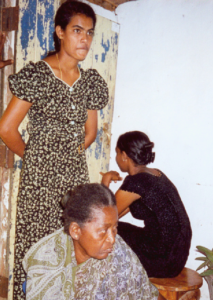
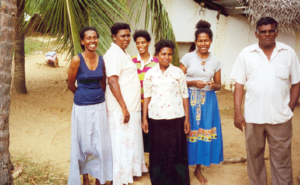
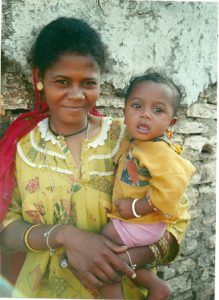
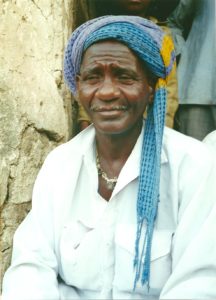
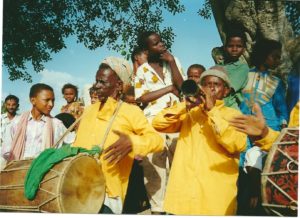

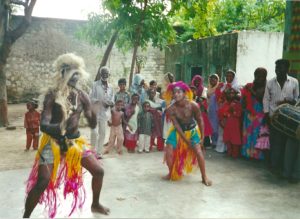





























































No comments:
Post a Comment